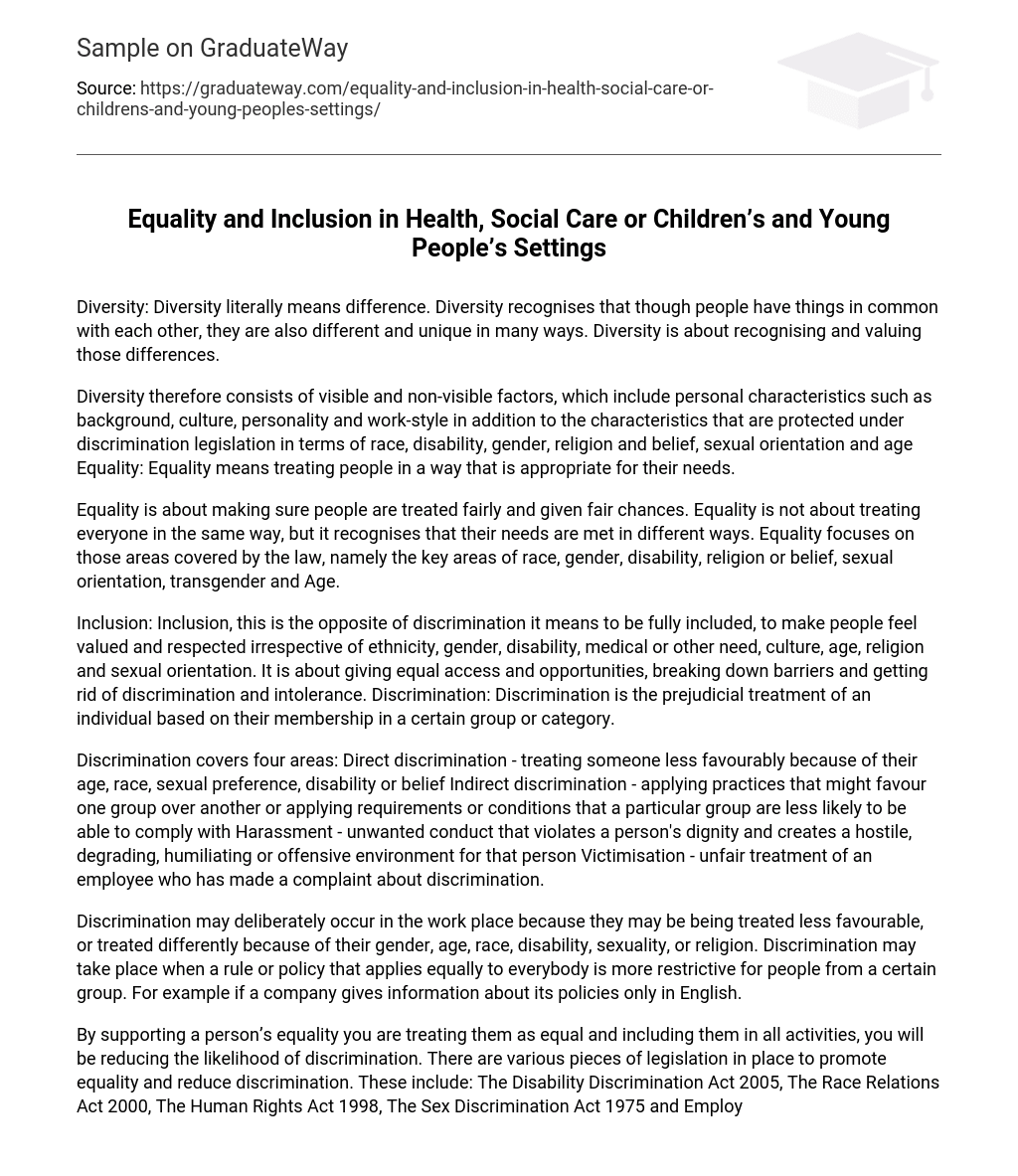Diversity is the recognition and appreciation of the distinct qualities and differences among individuals. Although people may have similarities, diversity highlights their unique characteristics, and it involves acknowledging and valuing these variations.
Diversity encompasses both visible and non-visible factors, including personal attributes like background, culture, personality, and work-style. It also includes characteristics protected by discrimination laws such as race, disability, gender, religion and belief, sexual orientation, and age. Equality involves treating individuals based on their unique needs.
Equality entails providing fair treatment and equal opportunities to individuals, while recognizing that people have diverse needs. It does not entail treating everyone in the same manner. Equality encompasses multiple protected categories under the law such as race, gender, disability, religion or belief, sexual orientation, transgender status, and age.
The idea of inclusion entails appreciating and showing respect to individuals without any form of discrimination based on factors like ethnicity, gender, disability, medical or other needs, culture, age, religion, or sexual orientation. Its goal is to guarantee equal opportunities and access by removing barriers and prejudice. On the other hand, discrimination refers to the unfair treatment of individuals belonging to a particular group or category.
There are four categories that encompass discrimination:
- Direct discrimination – involves treating someone less favourably due to their age, race, sexual preference, disability or belief
- Indirect discrimination – refers to the application of practices that may favor one group over another or impose requirements or conditions that a specific group is less likely to fulfill
- Harassment – encompasses unwanted conduct that violates an individual’s dignity and creates an environment that is hostile, degrading, humiliating, or offensive for them
- Victimisation – pertains to the unfair treatment of an employee who has filed a complaint regarding discrimination
+
Workplace discrimination can happen when people are treated unfairly because of their gender, age, race, disability, sexuality, or religion. This type of discrimination may stem from a rule or policy that aims to be fair to everyone but actually has a greater impact on a specific group. For example, if a company only communicates its policies in English.
Supporting someone’s equality and preventing discrimination can be accomplished by treating them equally and involving them in all activities. There are multiple legislations that strive to promote equality and diminish discrimination, such as The Disability Discrimination Act 2005, The Race Relations Act 2000, The Human Rights Act 1998, The Sex Discrimination Act 1975, and Employment Equality Regulations 2003.





